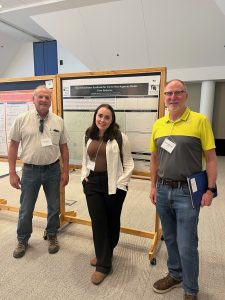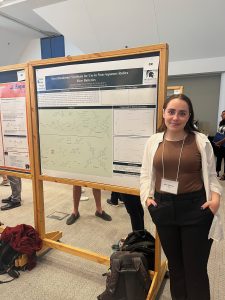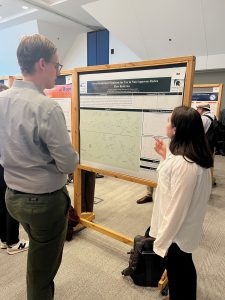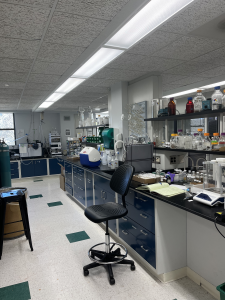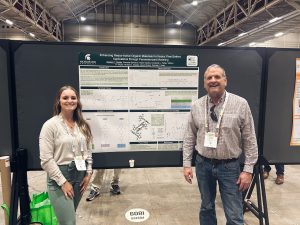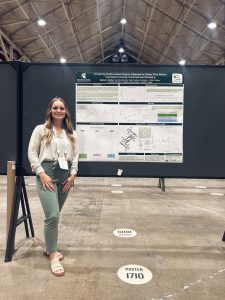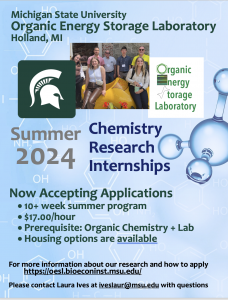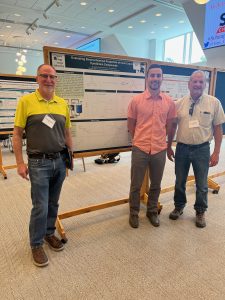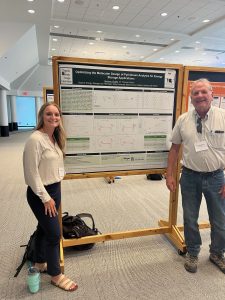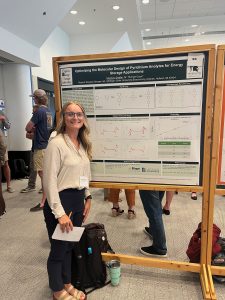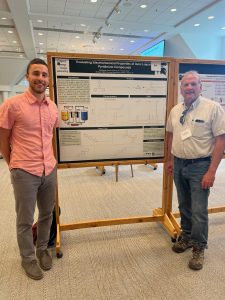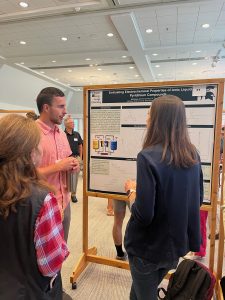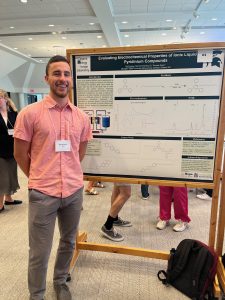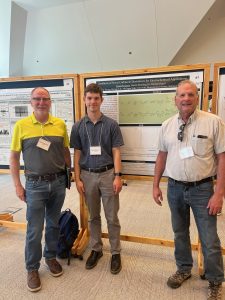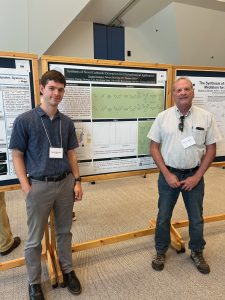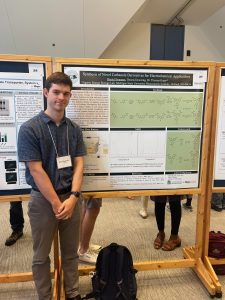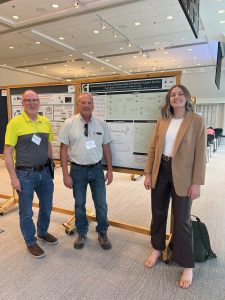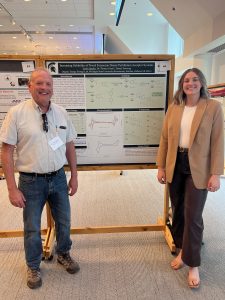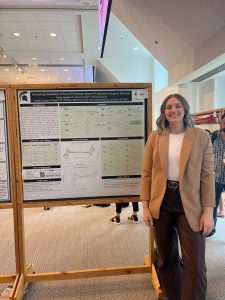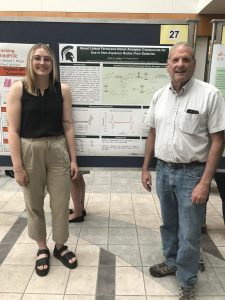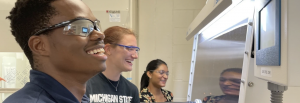Novel Dendrimer synthesis for use in non-aqueous redox flow batteries
Alexandra Glennon, Dennis Downing and Dr. Thomas Guarr
This research is focused on nonaqueous flow batteries, specifically the membrane barrier which acts as a wall keeping the electrolyte solutions separate. Nonaqueous batteries can contain a membrane which is less expensive than those in aqueous batteries, but it is not as ‘flow-proof’, meaning that molecules can still travel through it if small enough. A possible solution to this problem is dendrimers. Dendrimers are tree-like molecules with multiple ‘branches’ that can be attached to molecules to make them larger while also increasing electron density. This larger molecule then inhibits the electrolytes’ ability to move through the membrane barrier separating the electrolytic solutions, allowing only the electrons in the solution to cross over and creating a flowing electrochemical battery. the dendrimer used in this research was attached to pyryliums in order to increase molecular size and then analyzed through mass spectrometry, proton NMR, TLC, cyclic voltammetry and differential pulse voltammetry. Currently, pyridinium compounds are being synthesized in hopes to make additional dendrimers with them.
Alex completed the third year of her Chemistry degree at the University of Iowa before she came to try out research with us this summer. She enjoyed Holland and is interested in future battery research at U of Iowa. She is completing her final year and we are excited to find out what she does when she graduates next year.
